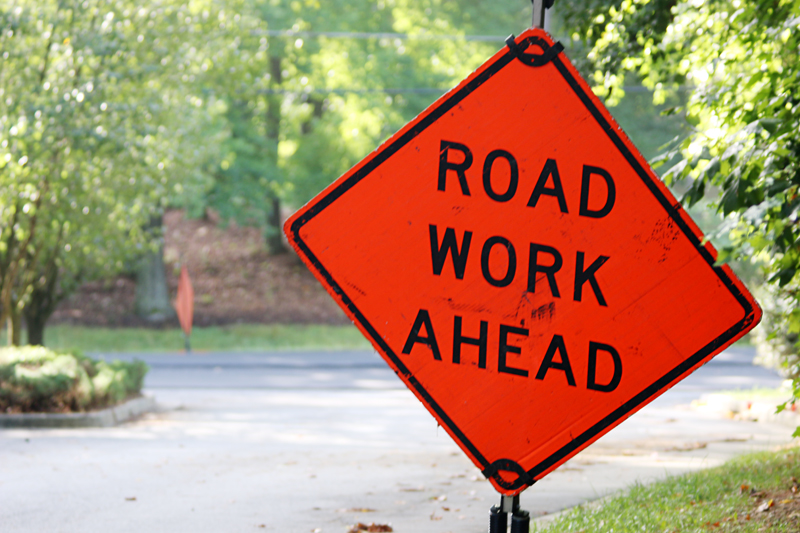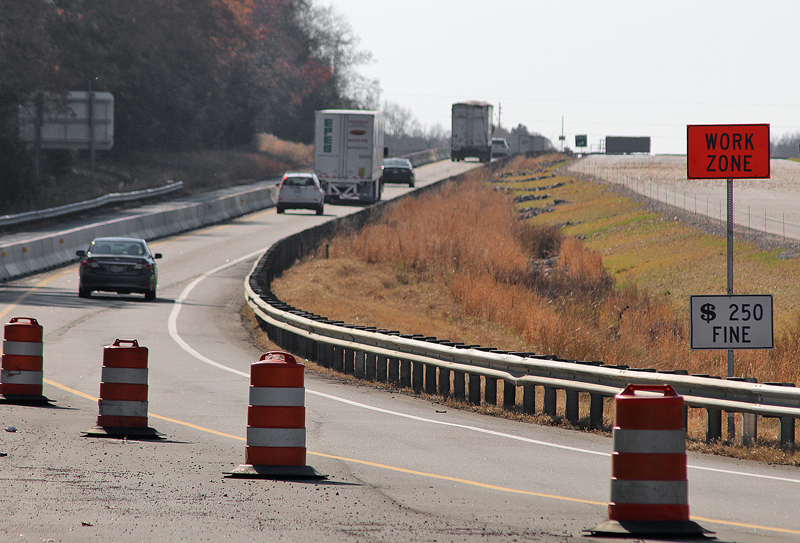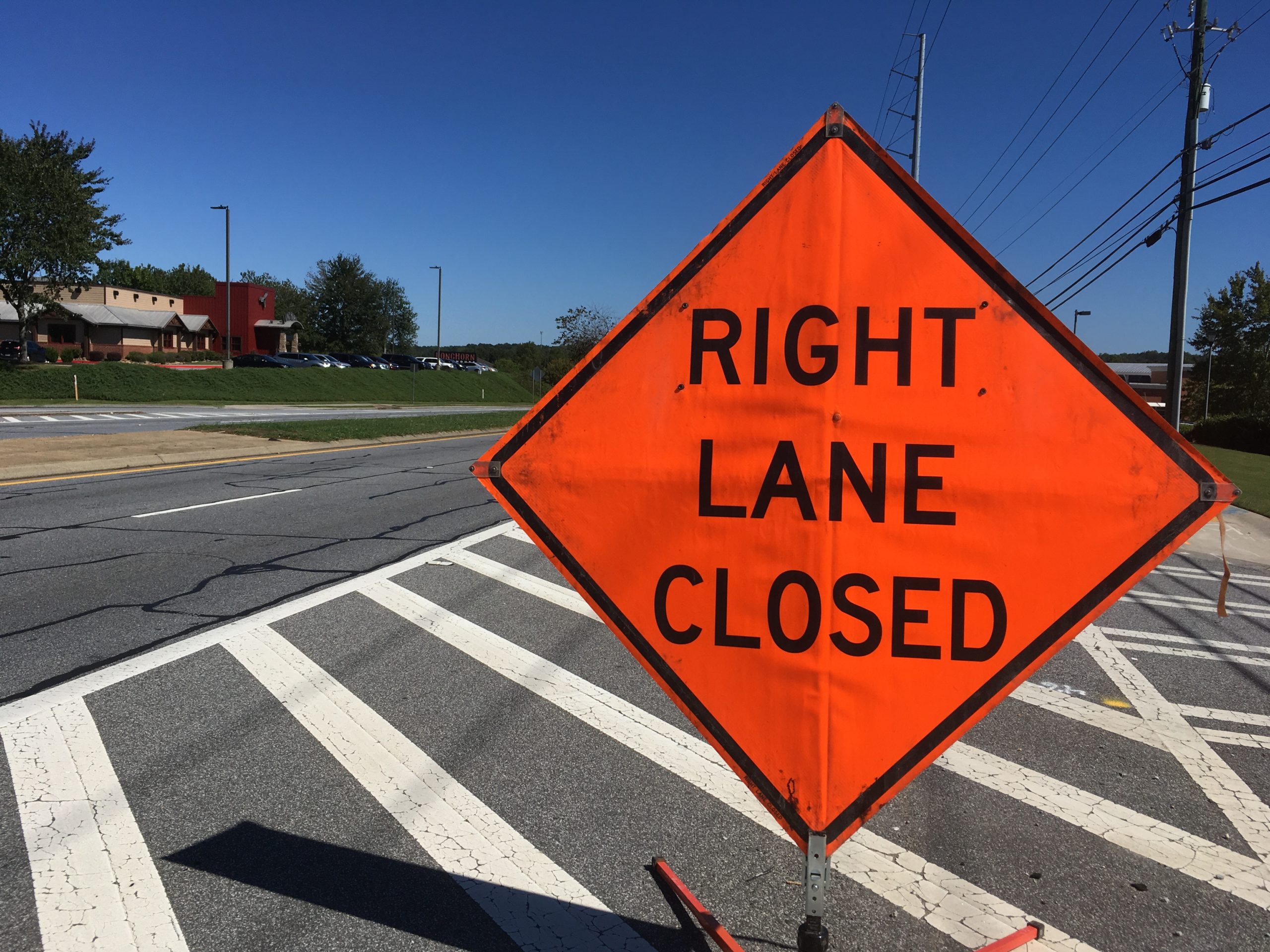After you rent a vehicle in a location at which you have never been before, you are driving on a road or highway which has at least two lanes of vehicles that travel in the same direction. A traffic sign appears which warns that one lane is closed ahead — one mile ahead as an example — perhaps because of construction or some other reason.
What do you do — or better yet, what are you supposed to do?
Driving Question: When to Merge Prior to a Closed Lane?

The answer to the question may be to ensure that you are driving in the lane which is not closed off to traffic — if no other vehicles are on the road…
…but what if other traffic is present at the time and all of the vehicles are merging into one lane? The “zipper” method — in which vehicles from two lanes alternate one at a time to merge into one lane, similar to the interlocking of the protruding teeth of a zipper when closing up two parts of a garment — typically works best and is usually the quickest way to alleviate traffic congestion at what is known as a bottleneck.
That all sounds fine — but the answer to the question becomes trickier when a line forms in the lane which remains open. What if the lane which closes in one mile is free of vehicles — but the other lane already has a line of vehicles which is either slowly moving or not moving at all? Do you merge your vehicle at that point — or do you drive in the open lane to the point where the lane is actually closed?
In different parts of the United States, I have witnessed at least two scenarios: one which traffic from both lanes merge at the point where the lane is closed…
…but in parts of the southern United States, I have seen one long line of vehicles wait in one lane, while the other lane is free of traffic at a point at which no solid line, pylons, or any other traffic controlling device dictates that that open lane cannot be used by motorists — in other words, using that open lane is not considered illegal.
Do you merge into traffic at that point — or do you use the open lane until you reach the official point of where the lane is closed?
The question could be further defined as to whether the open lane is the left lane or the right lane: technically, passing traffic in the right lane is generally considered illegal — so what if the left lane was the open lane which is closed to traffic one mile down the road?
Summary

I have heard that even though using an open lane to pass a line of traffic prior to the point at which vehicles are forced to officially merge into one lane may be legal, it is considered rude and of poor driving etiquette to do so…
…so if the construction zone happens to be near a sewage treatment plant; a landfill; a paper mill; a cheese factory; and a farm with cows, pigs, and chickens which used for industrial purposes, would you want to sit in traffic and be polite — or would you want to get out of there as soon as possible?
All humor aside, what would you say is the correct answer?
Other articles which pertain to being on the road at The Gate include:
- 9 Annoyances of Being On The Road
- Road Trip Around Easter Island
- Road Trip Around Iceland
- Four Hours at the Lesotho Border With a Flat Tire — and Locked Out of the Hotel
- How a Toll Collector in Morocco Tried to Swindle Me Out of Money — and Failed
- I Drove on One of the 10 Roads You Would Never Want to Drive On and Did Not Even Realize It
- Have You Ever Driven on the Road to Nowhere? I Have…
- No, Left-Hand-Side Driving on Foreign Roads is Not Scary…
- Stupid Tip of the Day: Driving on the Opposite Side of the Road
- Why Did This Boeing 747-451 Airplane Cross the Road?
- Why This Boeing 747-451 Airplane Crossed the Road
- Why Did the Elusive Black Rhinoceros Cross the Road at Lake Nakuru National Park in Kenya?
- On The Road From Nairobi to Masai Mara National Reserve
- Seven Tips on How to Avoid Road Rage as 38 Million Americans are Expected to Drive on Memorial Day Weekend
- 30 Kilometers Per Hour is No Longer Equal to 20 Miles Per Hour: Fun With Road Signs
- Vignettes From a Road Trip to Tampa
- The Road to Wadi Ghul — The Grand Canyon of Oman
- Driving a Vehicle on the Opposite Side of the Road
- Travel Trivia and Road Network Information
- 8 Iconic Road Trips as Minimalist Maps in the United States
- Crazy Video of Road Rage Incident: Car Runs Over Motorcycle With Two Occupants On It
All photographs ©2016, ©2017, and ©2020 by Brian Cohen.

